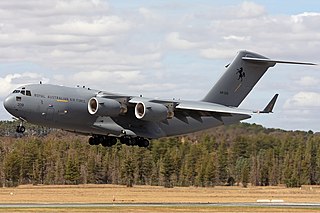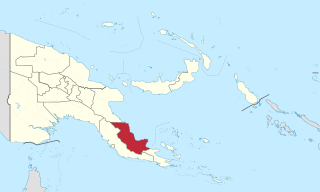
The Royal Australian Air Force (RAAF), formed March 1921, is the aerial warfare branch of the Australian Defence Force (ADF). It operates the majority of the ADF's fixed wing aircraft, although both the Australian Army and Royal Australian Navy also operate aircraft in various roles. It directly continues the traditions of the Australian Flying Corps (AFC), formed on 22 October 1912. The RAAF provides support across a spectrum of operations such as air superiority, precision strikes, intelligence, surveillance and reconnaissance, air mobility, space surveillance, and humanitarian support.

The Howard Government supported the disarmament of Iraq during the Iraq disarmament crisis. Australia later provided one of the four most substantial combat force contingents during the 2003 invasion of Iraq, under the operational codename Operation Falconer. Part of its contingent were among the first forces to enter Iraq after the official "execute" order. The initial Australian force consisted of three Royal Australian Navy ships, a 500-strong special forces task group, two AP-3C Orion maritime patrol aircraft, two B707 Air-to-Air refuelling aircraft, C-130 Hercules transport aircraft and No. 75 Squadron RAAF. Combat forces committed to Operation Falconer for the 2003 Invasion were withdrawn during 2003. Under the name Operation Catalyst, Australian combat troops were redeployed to Iraq in 2005, however, and assumed responsibility for supporting Iraqi security forces in one of Iraq's southern provinces. These troops began withdrawing from Iraq on 1 June 2008 and were completely withdrawn by 28 July 2009.
The Airfield Defence Guard (ADG) mustering of the Royal Australian Air Force (RAAF) performs specialist ground defence tasks to protect air power assets from hostile ground action. The mustering is composed of non-commissioned members, commonly called 'ADGies,' most of whom are employed within a Security Forces (SECFOR) Squadron (SQN). Their primary role is the protection of RAAF equipment, personnel, assets and facilities during operations. While ADGs train to counter special forces as the primary ground threat to the projection of air power, ADGs are themselves conventional forces. Other duties include training RAAF personnel in weapon handling and basic ground defence tactics.
The military history of Australia spans the nation's 230-year modern history, from the early Australian frontier wars between Aboriginals and Europeans to the ongoing conflicts in Iraq and Afghanistan in the early 21st century. Although this history is short when compared to that of many other nations, Australia has been involved in numerous conflicts and wars, and war and military service have been significant influences on Australian society and national identity, including the Anzac spirit. The relationship between war and Australian society has also been shaped by the enduring themes of Australian strategic culture and its unique security dilemma.

No. 30 Squadron is a squadron of the Royal Australian Air Force (RAAF). Raised in 1942 as a long-range fighter unit, the squadron saw action in the Second World War, serving in the South West Pacific Area against the Japanese and operating mainly in the ground attack and anti-shipping roles from bases in New Guinea and the Netherlands East Indies. After the war, the squadron was disbanded, however, it was re-raised a short time later as a unit of the part-time Citizen Air Force, operating in the target towing and air defence role in New South Wales. In 1960s the squadron ceased flying aircraft and operated surface-to-air missiles, providing for the defence of Sydney and Darwin before disbanding in 1968. The squadron was re-raised again in 2010 and since then it has served as an airbase support squadron located at RAAF Base East Sale.

The 5th Aviation Regiment is an Australian Army aviation unit. Formed in 1987 after the Army took over responsibility for operating helicopters from the Royal Australian Air Force, the regiment is based at RAAF Base Townsville, in Queensland. It currently forms part of the 16th (Aviation) Brigade and it operates the majority of the Army's transport helicopters. Throughout its existence, the regiment has been deployed overseas numerous times, supporting both peacekeeping and warlike operations. Since its formation elements of the regiment have made operational deployments to Cambodia, Papua New Guinea, East Timor, Iraq, Indonesia and Pakistan.

No. 4 Squadron is a Royal Australian Air Force squadron composed of the air force special forces Combat Controllers, aircrew who operate the Pilatus PC-9A(F) aircraft and instructors for the Australian Defence Force Joint Terminal Attack Controller (JTAC) course.

No. 38 Squadron was a Royal Australian Air Force (RAAF) transport and training unit active between 1943 and 2018. It was formed on 15 September 1943 and saw service during World War II transporting supplies and personnel between Australia and the combat zones in New Guinea and Borneo, using Douglas Dakota aircraft. Following the war, the squadron conducted regular courier flights between Australia and Japan in 1947 and 1948. No. 38 Squadron was deployed to Singapore from 1950 to 1952, supplying Commonwealth forces engaged in the Malayan Emergency and undertaking courier flights across Asia. In 1954 it became responsible for training RAAF personnel to operate Dakotas.

No. 24 Squadron is a Royal Australian Air Force squadron. The squadron was formed in 1940 and saw action as a bomber squadron during World War II serving in the Pacific theatre against the Japanese, and undertaking operations during the Battle of Rabaul, and the New Guinea, New Britain and Borneo campaigns. The squadron was disbanded in 1946 following the conclusion of hostilities, but was re-formed in 1951. From then until 2010 the squadron was an RAAF Reserve squadron located near Adelaide, South Australia; for part of this time, until 1960, the squadron continued to perform flying duties, before converting to a ground support role. In 2010, the squadron combined with Combat Support Unit Edinburgh to become a Permanent Air Force unit and it currently forms part of No. 96 Wing, Combat Support Group.

Australia was a member of the international coalition which contributed military forces to the 1991 Gulf War, also known as Operation Desert Storm. More than 1800 ADF personnel were deployed to the Persian Gulf from August 1990 to September 1991. In August 1990, two frigates HMAS Adelaide and HMAS Darwin and the replenishment ship HMAS Success left for the Persian Gulf. HMAS Success had no air defences so the Army 16th Air Defence Regiment deployed on this ship. On 3 December 1990, HMAS Brisbane and HMAS Sydney (IV) relieved HMAS Adelaide and HMAS Darwin. On 26 January 1991, HMAS Westralia replaced HMAS Success. A Navy Clearance diving team was also deployed for explosive ordnance and demolition tasks. Australian ships were in danger of mines and possible air attacks. In a number of recorded incidents, HMAS Brisbane encountered free floating mines, on one occasion narrowly avoiding a collision. Both HMA Ships Brisbane and Sydney encountered significant air threat warnings from Iran and Iraq throughout the initial period of the commencement of the Desert Storm Campaign. The detection of land based silkworm missiles from Iran throughout the campaign also added to the challenges for both crews as well as the multi-national Naval Forces.

No. 86 Wing is a Royal Australian Air Force (RAAF) transport and air-to-air refuelling wing. Coming under the control of Air Mobility Group, it is headquartered at RAAF Base Amberley, Queensland. The wing comprises No. 33 Squadron, operating Airbus KC-30 tanker-transports, No. 36 Squadron, operating Boeing C-17 Globemaster III heavy transports, No. 38 Squadron, operating Beech King Air 350 light transports, and the Australian Army's 68 Ground Liaison Section. Its aircraft support Australian military and humanitarian operations worldwide.

No. 84 Wing is a Royal Australian Air Force (RAAF) transport wing. Coming under the control of Air Mobility Group (AMG), it is headquartered at RAAF Base Richmond, New South Wales. The wing comprises No. 35 Squadron, operating Aliena C-27J Spartan transport Aircraft; No. 37 Squadron, operating Lockheed Martin C-130J Super Hercules medium transports; and a technical training unit, No. 285 Squadron.

No. 81 Wing is responsible for operating the McDonnell Douglas F/A-18 Hornet multi-role fighters of the Royal Australian Air Force (RAAF). Headquartered at RAAF Base Williamtown, New South Wales, the wing comprises three combat units, Nos. 3 and 77 Squadrons based at Williamtown and No. 75 Squadron at RAAF Base Tindal, Northern Territory, as well as an operational conversion unit at Williamtown. No. 81 Wing headquarters oversees squadron training in air-to-air and air-to-ground tactics, and support for the Australian Army and Royal Australian Navy. Tasked with offensive and defensive counter-air operations, the Hornets have been deployed to Diego Garcia in 2001–02, when they provided local air defence, to Iraq in 2003, when they saw action flying fighter escort and close air support missions in concert with Coalition forces, and to the Middle East in 2015–16, when they undertook strike operations during the military intervention against ISIL. They have also been employed to patrol high-profile events in Australia, including the Commonwealth Games and visits by foreign dignitaries.
The 173rd Aviation Squadron is an Australian Army helicopter squadron equipped with S70A Black Hawk helicopters and provides support to the Special Operations Command. The Squadron is based at Luscombe Airfield, Holsworthy Barracks, Sydney and forms part of the 6th Aviation Regiment.

The Royal Australian Air Force (RAAF) operates eight Boeing C-17 Globemaster III large transport aircraft. Four C-17s were ordered in mid-2006 to improve the ability of the Australian Defence Force (ADF) to operate outside Australia and its region. The aircraft entered service between November 2006 and January 2008, the second pair being delivered ahead of schedule. Two more Globemasters were ordered in 2011, the sixth being delivered to the RAAF in November 2012. Another two C-17s were ordered in October 2014, with the final aircraft being delivered in November 2015. The Globemasters are built to the same specifications as those operated by the United States Air Force (USAF), and the Australian aircraft are maintained through an international contract with Boeing.

The Royal Australian Air Force (RAAF) has operated forty-eight Lockheed C-130 Hercules transport aircraft. The type entered Australian service in December 1958, when No. 36 Squadron accepted the first of twelve C-130As, replacing its venerable Douglas C-47 Dakotas. The acquisition made Australia the first operator of the Hercules after the United States. In 1966 the C-130As were joined by twelve C-130Es, which equipped No. 37 Squadron. The C-130As were replaced by twelve C-130Hs in 1978, and the C-130Es by twelve C-130J Super Hercules in 1999. No. 37 Squadron became the RAAF's sole Hercules operator in 2006, when No. 36 Squadron transferred its C-130Hs prior to converting to Boeing C-17 Globemaster III heavy transports. The C-130Hs were retired in November 2012, leaving the C-130J as the only model in Australian service.

The Australian Defence Force has operated Boeing CH-47 Chinook heavy-lift helicopters for most of the period since 1974. Thirty of the type have entered Australian service, comprising twelve CH-47C variants, eight CH-47Ds and ten CH-47Fs. The helicopters have been operated by both the Royal Australian Air Force (RAAF) and Australian Army.



















